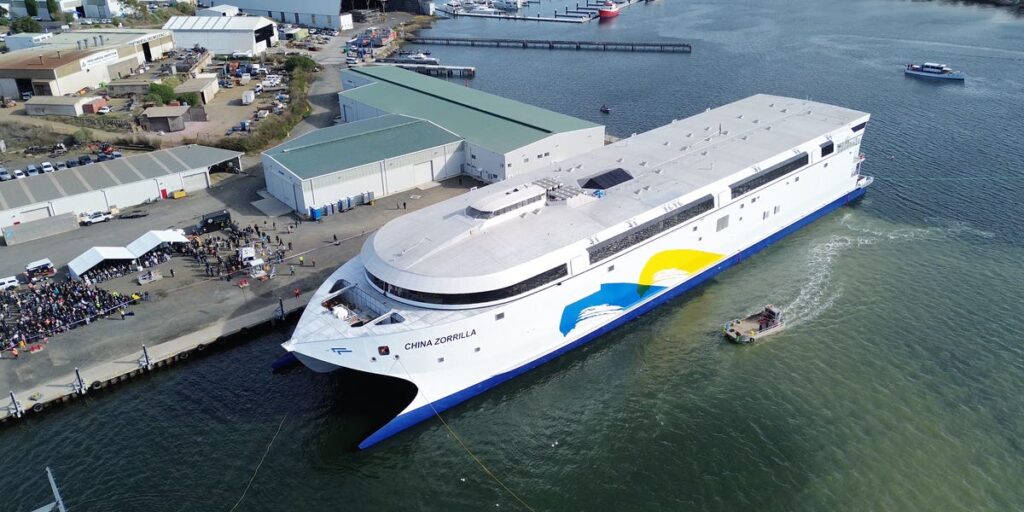An Australian shipbuilder has launched the world’s largest fully electric ship, marking a turning point for clean maritime transport.
Incat, a Tasmania-based manufacturer, said the 400-foot-long Hull 096 vessel — the biggest electric vehicle ever built — runs entirely on battery power.
Built for South American ferry operator Buquebus, it will carry 2,100 passengers and 225 vehicles between Buenos Aires and Uruguay without using any fossil fuels.
The ship’s energy system includes more than 250 metric tons, or roughly 275 tons, of batteries and delivers over 40 megawatt-hours of capacity — four times as large as any previous maritime installation.
It powers eight electric-driven waterjets supplied by Finnish tech firm Wärtsilä, which partnered on the project.
“This ship changes the game,” said Incat Chairman Robert Clifford. “We’ve been building world-leading vessels here in Tasmania for more than four decades, and Hull 096 is the most ambitious, most complex, and most important project we’ve ever delivered.”
Buquebus initially planned to operate the ferry on LNG but pivoted to electric power after Clifford proposed the switch.
Incat
Tasmania’s premier, Jeremy Rockliff, praised the launch as a landmark moment for Australian manufacturing.
“Tasmania has long been a leader in maritime innovation, and Incat’s latest achievement is a testament to our state’s world-class shipbuilding capabilities and proud seafaring heritage,” he said.
The vessel also features a 2,300-square-meter duty-free shopping deck — the largest retail space on any ferry worldwide. Crews will complete the interior fit-out and begin sea trials later this year on Tasmania’s River Derwent.
“Hull 096 proves that large-scale, low-emission transport solutions are not only possible, they are ready now,” said Incat CEO Stephen Casey.
Incat didn’t respond to Business Insider’s request for comments made outside working hours.


